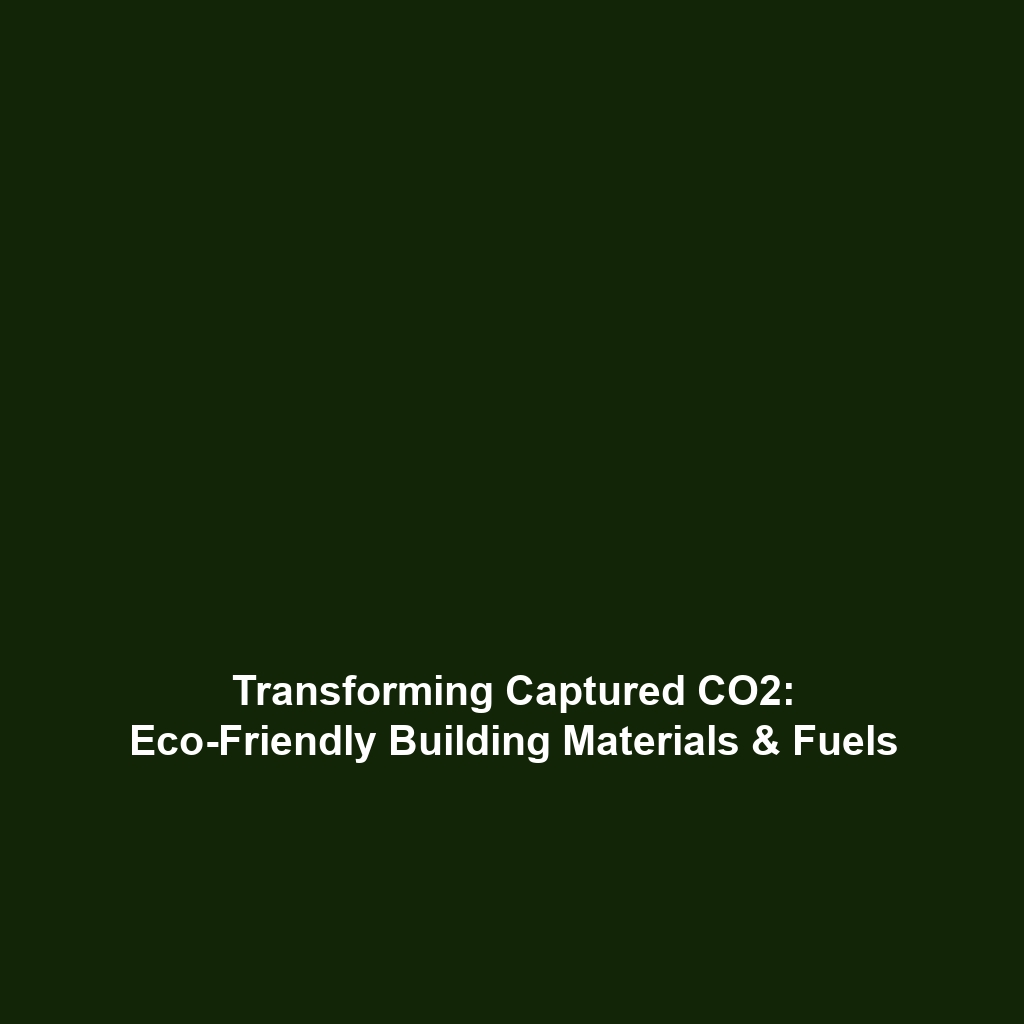Carbon Capture & Storage (CCS) in Hard-to-Abate Sectors
Introduction
Carbon Capture & Storage (CCS) stands as a vital solution in the global effort to mitigate climate change, particularly for hard-to-abate sectors like cement, steel, and chemicals. These industries are responsible for a substantial portion of global CO2 emissions, making them key targets for reduction efforts. CCS technology captures carbon dioxide emissions at the source, preventing them from entering the atmosphere and contributing to global warming. As industrial processes become increasingly scrutinized for their environmental impact, the significance of CCS in facilitating a sustainable transition is more critical than ever.
Key Concepts
Understanding the role of CCS in hard-to-abate sectors involves several key concepts:
1. Definition of CCS
Carbon Capture & Storage refers to a range of technologies designed to capture and securely store CO2 emissions from industrial processes.
2. Hard-to-Abate Sectors
These are sectors where emissions are difficult to eliminate due to the nature of their processes. Cement, steel, and chemicals fall into this category because their production inherently releases CO2.
3. CCS Processes
The CCS process generally involves capturing emissions, transporting the CO2, and storing it in geological formations. Each step has specific technological requirements and challenges linked to the sector being addressed.
Applications and Real-World Uses
CCS technology is already being applied in several significant ways across hard-to-abate sectors:
1. Cement Industry
Modern cement production facilities are integrating CCS to capture up to 90% of their CO2 emissions during the calcination process.
2. Steel Manufacturing
Steel plants are using CCS to reduce emissions from blast furnaces, transitioning towards cleaner production methods.
3. Chemical Production
Chemicals such as ammonia and methanol are being produced with minimized emissions by utilizing CCS technology.
Current Challenges
Despite its potential, several challenges in applying CCS to hard-to-abate sectors exist:
- High Costs: Implementation of CCS technologies often requires significant upfront investment.
- Technical Limitations: Current technologies may not capture all emissions effectively in certain processes.
- Regulatory Barriers: Unclear regulations can hinder CCS deployment across various jurisdictions.
- Public Perception: Concerns about the safety and efficacy of CO2 storage can impede acceptance.
Future Research and Innovations
The future of CCS holds promise with several ongoing research initiatives:
1. Breakthrough Technologies
Innovations in direct air capture and the use of artificial intelligence in optimizing capture processes are on the rise.
2. Next-Gen Materials
Research into new materials that can capture carbon more efficiently is expected to improve the viability of CCS.
3. Policy Development
Collaborative efforts between governments and industries to establish supportive policies will be crucial for progressing CCS initiatives.
Conclusion
In conclusion, Carbon Capture & Storage (CCS) is essential for addressing CO2 emissions from hard-to-abate sectors like cement, steel, and chemicals. As significant contributors to global emissions, these industries must leverage CCS technologies to transition towards a low-carbon future. Continuous innovation and collaboration will be vital in overcoming current challenges and unlocking the full potential of CCS.
For further information on CCS technology and its implications, explore our related articles on Carbon Capture Basics and Emission Reduction Strategies.


